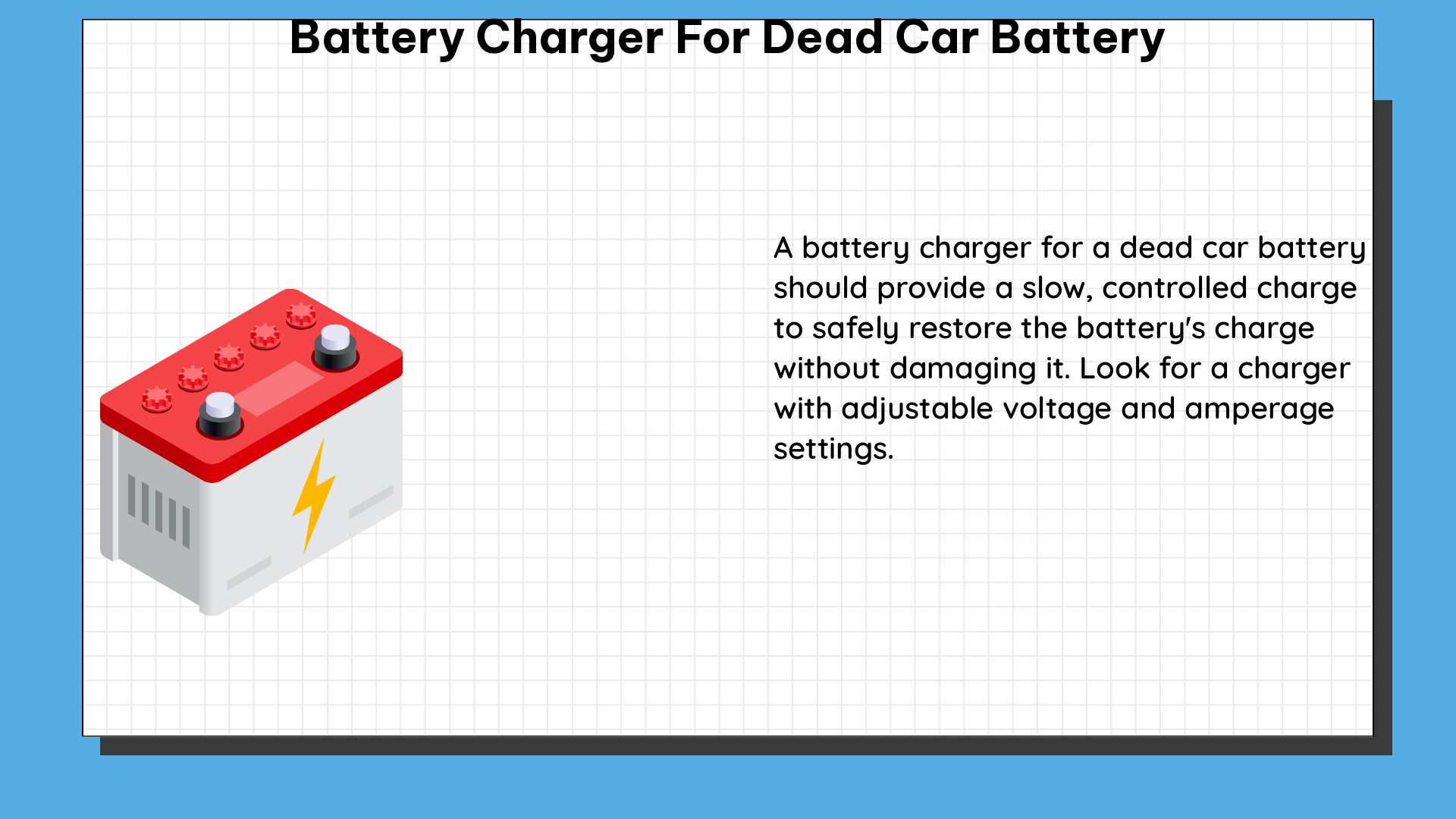When dealing with a dead car battery, it’s crucial to understand the technical specifications of a battery charger and how to use it effectively. This comprehensive guide will provide you with the necessary information to safely and efficiently charge your dead car battery.
Charging Current and Voltage
The charging current and voltage are critical factors in the charging process. A trickle charger with an output of 13.0V and 10A can be used to charge a dead car battery with a capacity of 60Ah. It’s important to note that the charging voltage should be set below the gassing stage, typically around 2.40V/cell (14.40V with 6 cells) for lead-acid batteries. This helps prevent overcharging and potential damage to the battery.
| Battery Capacity | Charging Current | Charging Voltage |
|---|---|---|
| 60Ah | 10A | 13.0V |
Exceeding the recommended charging voltage can lead to the rapid evolution of hydrogen gas, which can be dangerous and potentially explosive. It’s crucial to follow the manufacturer’s guidelines to ensure a safe and effective charging process.
Charging Time

To calculate the charging time, you can use the formula: charging time (hours) = battery capacity (Ah) / charging current (A). For example, if you have a 60Ah battery and a 10A charger, the charging time would be approximately 6 hours.
Charging Time (hours) = Battery Capacity (Ah) / Charging Current (A)
Charging Time (hours) = 60Ah / 10A = 6 hours
It’s important to note that the actual charging time may vary depending on the battery’s state of charge, temperature, and other factors. Monitoring the battery’s voltage and current during the charging process is recommended to ensure a complete and safe charge.
State of Charge (SoC)
The SoC of a battery can be estimated using the open-circuit voltage (OCV). A fully charged lead-acid battery typically has an OCV of around 12.88V, while a discharged battery might show a voltage as low as 11.80V. By measuring the OCV, you can determine the battery’s state of charge and plan the charging process accordingly.
| State of Charge | Open-Circuit Voltage (OCV) |
|---|---|
| 100% | 12.88V |
| 0% | 11.80V |
Monitoring the battery’s OCV during the charging process can help you track the progress and ensure the battery is fully charged before disconnecting the charger.
Charge Rate
Manufacturers recommend a charge C-rate of 0.3C for lead-acid batteries, but they can be charged at a higher rate up to 80% SoC without causing oxygen and water depletion. The C-rate is a measure of the rate at which a battery is charged or discharged relative to its maximum capacity.
For example, if a 60Ah battery is charged at a 0.3C rate, the charging current would be:
Charging Current = 0.3 x 60Ah = 18A
Exceeding the recommended charge rate can lead to overheating, gassing, and potential damage to the battery. It’s essential to follow the manufacturer’s guidelines to ensure a safe and effective charging process.
Ripple Voltage
Manufacturers limit the ripple on the charge voltage to 5 percent to prevent hydrogen evolution and electrolyte depletion in large stationary batteries. Ripple voltage is the AC component of the charging voltage, which can cause premature battery failure if not properly controlled.
To minimize the ripple voltage, it’s recommended to use a high-quality battery charger with a low-ripple output. This helps maintain the battery’s electrolyte balance and extends its lifespan.
Battery Condition
Measuring the OCV while the battery is in storage provides a reliable indication of the battery’s state of charge and condition. A cell voltage of 2.10V at room temperature reveals a charge of about 90 percent, indicating a good condition battery that needs only a brief full charge prior to use.
| Battery Condition | Cell Voltage (at room temperature) |
|---|---|
| Good | 2.10V (90% SoC) |
| Poor | Below 2.00V |
Regularly checking the battery’s OCV can help you identify any issues or degradation, allowing you to take appropriate action to maintain the battery’s health.
Temperature
The storage temperature affects the battery’s open-circuit voltage. A cool battery lowers the voltage slightly, and a warm one increases it. Therefore, it’s essential to observe the storage temperature when measuring the OCV to ensure accurate readings and proper charging.
| Temperature | Open-Circuit Voltage (OCV) |
|---|---|
| Cool | Slightly lower than 12.88V |
| Warm | Slightly higher than 12.88V |
Maintaining the battery at the recommended storage temperature can help ensure accurate OCV measurements and a more efficient charging process.
By understanding these technical specifications and following the recommended guidelines, you can safely and effectively charge a dead car battery using a battery charger. Remember to always prioritize safety and follow the manufacturer’s instructions to avoid any potential hazards.
References:
– Battery University, “BU-403: Charging Lead Acid – Battery University”, https://batteryuniversity.com/article/bu-403-charging-lead-acid
– Electronics Stack Exchange, “For how long should I charge my dead car battery without damaging it”, https://electronics.stackexchange.com/questions/632124/for-how-long-should-i-charge-my-dead-car-battery-without-damaging-it
– Interstate Batteries, “You Might Be Driving with a Dead Car Battery. Get a Battery Test”, https://www.interstatebatteries.com/blog/get-a-battery-test

The lambdageeks.com Core SME Team is a group of experienced subject matter experts from diverse scientific and technical fields including Physics, Chemistry, Technology,Electronics & Electrical Engineering, Automotive, Mechanical Engineering. Our team collaborates to create high-quality, well-researched articles on a wide range of science and technology topics for the lambdageeks.com website.
All Our Senior SME are having more than 7 Years of experience in the respective fields . They are either Working Industry Professionals or assocaited With different Universities. Refer Our Authors Page to get to know About our Core SMEs.